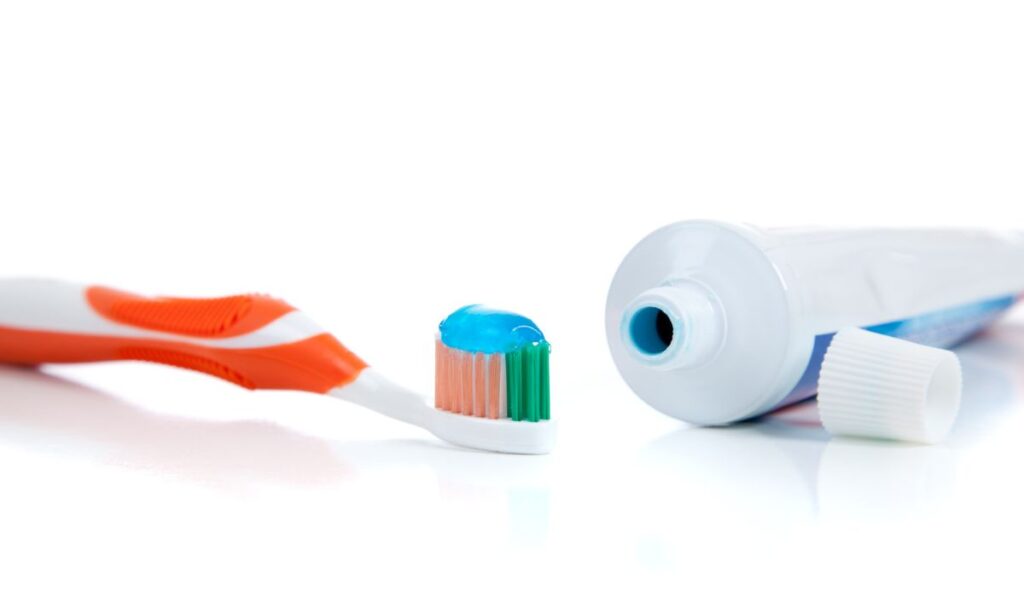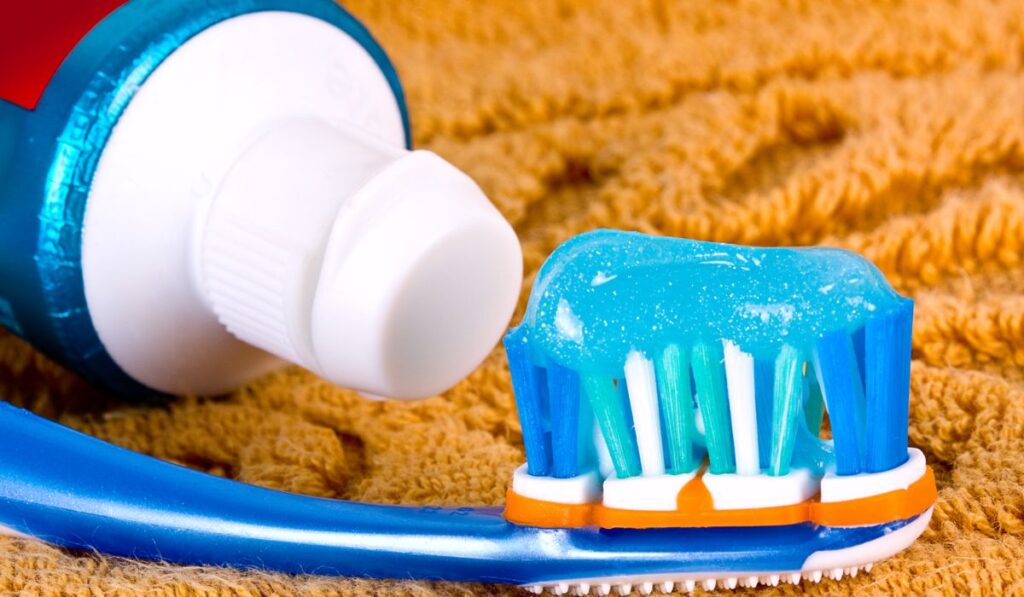Toothpaste has become a household substance for many years because of its many oral health benefits. Many types of toothpaste are on the market today, and each type is manufactured to offer certain particular benefits. So how do you pick the best one?
When choosing the best toothpaste, look for brands approved by the American Dental Association (ADA). Other features to consider include fluoride content and/or whitening ability, and pausing to consider if you have other needs like sensitivity management or all natural ingredients.
In this article, we discuss in detail the factors to consider when choosing toothpaste, different types of toothpaste, ingredients you should embrace, and the ones you should avoid. And you’ll get a list of some of the best toothpaste of 2022. Welcome on board.
How Do You Choose the Right Toothpaste?

There are many brands of toothpaste from different companies. Some are excellent at what they are formulated to do, while others can harm your teeth. So, when choosing toothpaste, pick one that serves your needs. The types of toothpaste include:
Dental concerns
As already mentioned, toothpaste is designed to achieve different dental goals, from cavity control, gingivitis control, desensitizing, and/or teeth whitening. Therefore, your personal preferences and dental needs should determine your choice of toothpaste.
Toothpaste ingredients
Most toothpaste has indecipherable labels, but it’s good to know what toothpaste contains before buying it. Just try to find out a few of the ingredients it contains. The ingredients determine what the toothpaste is designed for and whether it’s safe for your use.
For example, strontium chloride and potassium nitrate in some toothpaste help sensitive teeth. So, if your goal is to achieve a desensitizing effect, look for toothpaste with these ingredients. Another common ingredient in toothpaste is sodium lauryl sulfate (SLS).
This chemical is excellent for washing off food particles, plaque, and bacteria from teeth, but some experts claim it causes mouth ulcers, especially for people whose gums are sensitive.
Some toothpaste also contains triclosan, a bacteria-fighting ingredient. However, some dentists don’t prefer toothpaste with this ingredient because it may lead to bacterial resistance. Let your dentist or health practitioner advise you on whether or not to use toothpaste with triclosan.
Price point
Toothpaste costs differently depending on its quality. Most expensive kinds of toothpaste are designed for people with oral or dental problems. If you have healthy teeth, you may not need very expensive toothpaste. However, you’ll need toothpaste to maintain excellent oral health.
Some more expensive brands like Dr. Bronner’s (on Amazon) boast all natural ingredients, leading to an increased price. But we’re talking a few dollars per tube of toothpaste, not a lot more in the grand scheme.
Whichever toothpaste you buy, ensure it’s approved by the ADA (the American Dental Association). Also, avoid toothpaste that contains toxic chemicals like diethylene glycol. Remember, the FDA(Food and Drug Administration ) does not recommend toothpaste made in China.
A Breakdown of the Different Types of Toothpaste
Today, there are many types of toothpaste on the market. The kind of toothpaste you choose will depend on the use you want to put it to.
Toothpaste for Specific Issues
- Fluoride toothpaste: Fluoride toothpaste is good for strengthening tooth enamel. It’s best to protect your teeth against acidity, mainly caused by bacteria.
- Tartar control toothpaste: Your teeth are typically covered with plaque (bacteria). Tartar forms a good breeding ground for bacterial growth, leading to gum disease. If you are concerned, choose tartar control toothpaste with pyrophosphates and zinc citrate.
- Toothpaste for tooth sensitivity: If your teeth are sensitive, they’ll feel irritated by cold or hot temperatures. The best thing you can do to save yourself is to use toothpaste with potassium nitrate and strontium chloride. These two chemicals will offer relief by blocking the pain pathways leading to the nerves in your teeth.
- Teeth whitening toothpaste: If you aim to whiten your teeth, choose a toothpaste designed for teeth whitening. These kinds of toothpaste contain abrasive particles that will help polish your teeth.
- Children’s toothpaste: Choose brands with fruit flavors when buying toothpaste for your kids. This will help instill good oral behavior in them.
Fluoride vs. Fluoride-Free Toothpaste
Reducing cavities and preserving teeth are perhaps the most critical reasons you use toothpaste. There are two types of toothpaste: fluoride and fluoride-free.
Although you can use fluoride-free toothpaste to remove bacteria from your teeth, fluoride toothpaste is better for cavity control, explaining why most top toothpastes contain fluorine.
Fluoride Toothpaste
Fluoride occurs naturally in the Earth’s crust. However, after discovering its benefits for dental health, people began adding this mineral to their public water supply almost seven decades ago, making fluoridated water one of the best inventions of the 20th century.
Many studies have shown that fluoride, when added to water supplies, lowers tooth decay cases by up to 25%. The mineral also strengthens tooth enamel, thus protecting teeth against acid attacks caused by bacteria in the mouth.
Fluoride prevents the development of tooth cavities by reducing tooth decay. Fluoride also prevents the growth of tooth cavities, eliminates plaque, and can re-mineralize your enamel. All these explain why fluoride is added to toothpaste.
ADA recommends the addition of fluoride into toothpaste to offer all the benefits mentioned. The ADA also recommends that toothpaste not contain any ingredients that accelerate tooth decay, for example, sugary flavorings. It’s worth noting that flavored toothpaste isn’t necessarily always a bad choice, as long as it contains enough fluoride.
However, it’s worth mentioning that excess fluoride can lead to tooth browning (discoloration), a condition known as fluorosis. Therefore, kids under two should use a tiny amount of fluoride-based toothpaste. While we’re talking about fluoride, check out our comprehensive guide to the benefits and risks of fluoride toothpaste.
Fluoride-Free Toothpaste
Generally, dentists advise their clients against using fluoride-free toothpaste because fluoride plays a significant role in maintaining good oral health. However, fluoride-free toothpaste may be necessary for conditions such as:
- When you’ve experienced dental fluorosis, or you are allergic to fluoride.
- When your kid likes swallowing toothpaste, that can increase the chances of dental fluorosis.
- When you believe the amount of fluoride you release into the water when using toothpaste can harm the environment.
You can use fluoride-free toothpaste if your aim is only to:
- Make your mouth feel fresh.
- Physically clean your teeth by removing any buildup.
- Whiten your teeth.
- Eliminate bacteria from your mouth if the toothpaste contains ingredients like essential oils, xylitol, and calcium phosphate.
Suppose you want to strengthen your enamel and have strong teeth. In that case, you can choose fluoride toothpaste, but if you are concerned about exposure to excess fluoride or are allergic to fluoride, choose fluoride-free toothpaste. Alternatively, you can talk to your dentist before buying any toothpaste.
Ingredients to Look for in Your Toothpaste
When shopping for toothpaste, the starting point is to look for brands approved by the ADA and have their seal of acceptance. Beyond that, you can choose toothpaste that serves your needs. Some of the chemicals you should look out for in toothpaste include:
Fluoride
Fluoride is the main ingredient in cavity-fighting toothpaste. It helps prevent tooth decay by straightening enamel. All ADA-approved toothpaste contains fluoride.
Dental products contain two types of fluorides, namely sodium fluoride and stannous fluoride. The former prevents tooth decay, while the latter reduces tooth sensitivity, gingivitis, and tooth decay.
Potassium Nitrate
Toothpaste containing potassium nitrate is good if you have sensitive teeth. This ingredient reduces tooth sensitivity if used consistently.
Zinc Citrate
This ingredient eliminates plaque, a dirty, sticky, bacteria-containing film that builds up on the surface of the teeth. Plaque can turn into tartar when it absorbs calcium from your saliva. Tartar is more arduous and may need scraping by a dentist.
Calcium Carbonate
Calcium carbonate is an abrasive agent that helps remove stains from teeth. Toothpaste with calcium carbonate can remove stains within a few days of use. Because it’s mild, it’s safe to use and will not hurt your gum tissue.
Hydrogen Peroxide
Hydrogen peroxide is also another toothpaste ingredient that removes stains. Hydrogen peroxide must be included in toothpaste at the right concentration. Otherwise, it can damage your enamel, as we’ve explored in a separate article.
Ingredients to Avoid in Your Toothpaste
Not all toothpaste ingredients are safe for your teeth. Some are too abrasive and can damage your enamel. For this reason, it’s best to choose toothpaste with the ADA seal. Some of the ingredients you should be wary about include:
- Sodium lauryl sulfate (SLS): This is the ingredient responsible for the foaming property of toothpaste when used in teeth cleaning. The problem with SLS is that it causes peeling, swelling, redness, and sores in some people’s mouths.
- Activated charcoal: Activated charcoal is typically added to some toothpaste to enhance teeth cleaning because of its abrasive nature. Unfortunately, it can wear down the enamel and cause tooth sensitivity, which won’t benefit you much.
Some of the Best Toothpastes

Now that you have some information about toothpaste, it’s good to know which toothpastes tick most of the boxes when it comes to the qualities you are looking at. Some of the top kinds of toothpaste recommended by dentists include:
Colgate Total
Colgate Total (on Amazon) is the best toothpaste if you want to fight plaque. When you use this toothpaste, it will fight plaque for 12 hours or more. It also deep-cleans teeth and fixes tooth damage.
Crest Pro-Health
Crest Pro-Health toothpaste (on Amazon) is ADA-approved. It’s an excellent teeth whitening agent and also reduces sensitivity. Crest Pro-Health is also good at fighting plaque, preventing cavities and gingivitis, and combating bad breath. In addition, it’s the best toothpaste for overall oral hygiene.
Sensodyne ProNamel Gentle Whitening Toothpaste
If you have sensitive teeth, you need not restrict yourself to only one type of toothpaste. There’s no harm in using two or more types of toothpaste. Sensodyne ProNamel Gentle Whitening (on Amazon) will help you fight tooth sensitivity and whiten your teeth. This toothpaste also hardens enamel and prevents tooth decay.
Hello Naturally Whitening Fluoride Toothpaste
This is the best SLS-free toothpaste you can get on the market today. This is the best toothpaste for you if you are prone to mouth peeling, swelling, redness, or sores. SLS has been shown to cause canker sores (aphthous ulcers) and gingivitis irritation. This toothpaste contains fluoride, which means it will strengthen your teeth.
Colgate Optic White Toothpaste
Colgate Optic White Toothpaste (on Amazon) is best for teeth whitening. It’s recommended by the ADA and many dentists for its teeth whitening properties.
Unlike other toothpaste that relies on physical teeth cleaners like calcium carbonate and silica, Colgate Optic White Toothpaste relies on hydrogen peroxide (a chemical whitener) to whiten teeth. However, you should use this toothpaste judiciously because it can cause tooth sensitivity if used in excess.
Sensodyne Extra Whitening Toothpaste
Sensodyne Extra Whitening Toothpaste (on Amazon) is SLS-free, contains fluoride, and is ADA-approved. This is a good toothpaste for sensitive teeth. This toothpaste contains a physical tooth cleaner called hydrated silica and is free from any chemical whitener.
Crest Cinnamon Toothpaste
If you are looking for non-mint-flavored toothpaste, Crest Cinnamon Toothpaste (on Amazon) is the best deal. This toothpaste contains SLS, cinnamon, and fluoride. It’s ADA-approved and doesn’t contain stannous fluoride. You’ll love this toothpaste if you are a fan of cinnamon flavor.
Tom’s of Maine Fluoride-Free Rapid Relief Sensitive Toothpaste
This is a fluoride-free toothpaste, making it an excellent choice if you use water that already contains fluoride. It’s also best if you are allergic to fluoride.
In addition, it’s a perfect choice for fighting cavities because it contains xylitol. It also contains SLS, which is good for removing debris. The SLS it has may not be suitable for those with sensitive teeth and gums, though.
Bite Toothpaste Bits
Bite Toothpaste Bits are SLS-free toothpaste with two flavors: berry and mint. You can also choose the one with fluoride or the one that’s fluoride-free. In addition, the toothpaste comes in the form of tablets in plastic-free containers, making it easier to travel with.
Tom’s of Maine Children’s Toothpaste
This is the best toothpaste for children because of its silly strawberry flavor. This toothpaste has no artificial flavors, sweeteners, or colors and is highly recommended by dentists.


